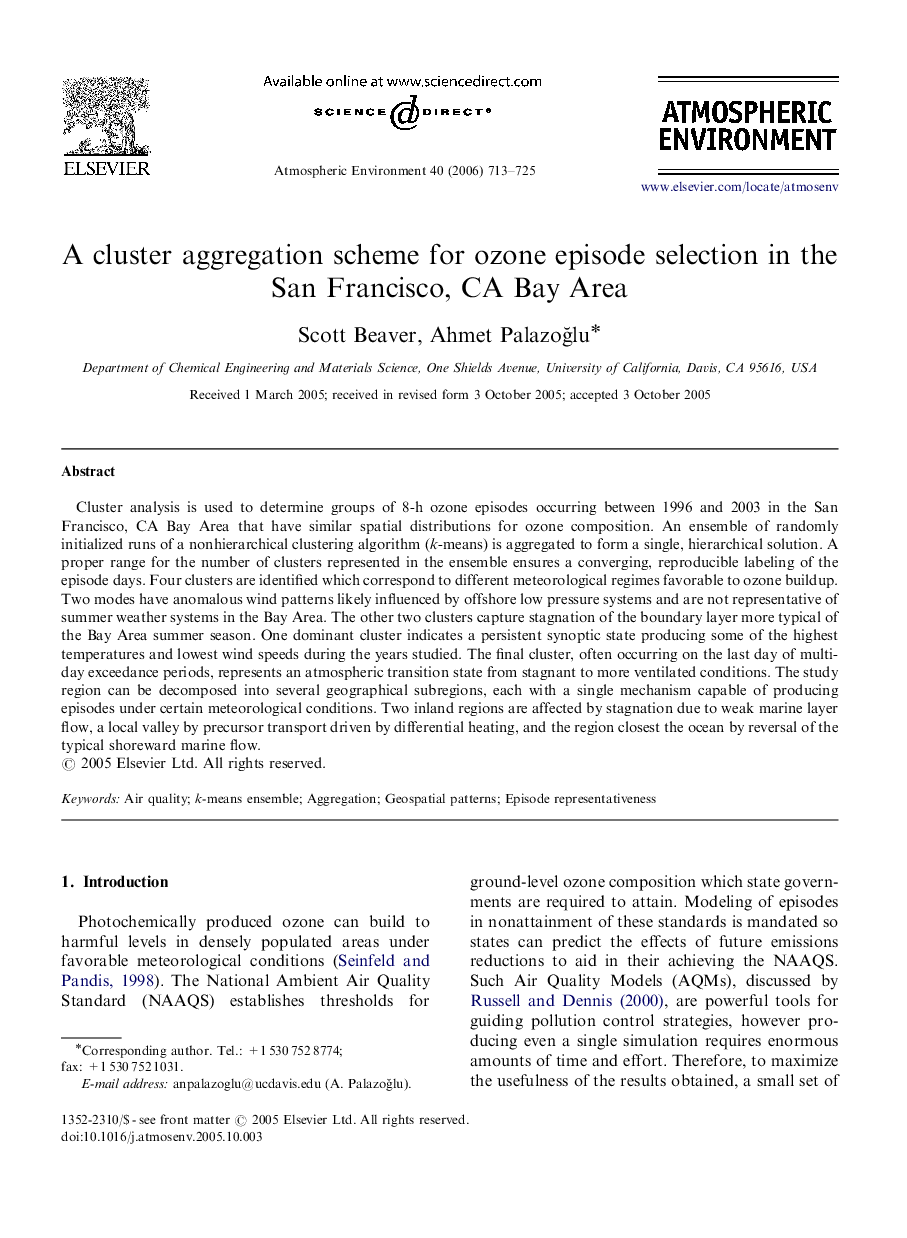| Article ID | Journal | Published Year | Pages | File Type |
|---|---|---|---|---|
| 4445042 | Atmospheric Environment | 2006 | 13 Pages |
Cluster analysis is used to determine groups of 8-h ozone episodes occurring between 1996 and 2003 in the San Francisco, CA Bay Area that have similar spatial distributions for ozone composition. An ensemble of randomly initialized runs of a nonhierarchical clustering algorithm (k-means) is aggregated to form a single, hierarchical solution. A proper range for the number of clusters represented in the ensemble ensures a converging, reproducible labeling of the episode days. Four clusters are identified which correspond to different meteorological regimes favorable to ozone buildup. Two modes have anomalous wind patterns likely influenced by offshore low pressure systems and are not representative of summer weather systems in the Bay Area. The other two clusters capture stagnation of the boundary layer more typical of the Bay Area summer season. One dominant cluster indicates a persistent synoptic state producing some of the highest temperatures and lowest wind speeds during the years studied. The final cluster, often occurring on the last day of multi-day exceedance periods, represents an atmospheric transition state from stagnant to more ventilated conditions. The study region can be decomposed into several geographical subregions, each with a single mechanism capable of producing episodes under certain meteorological conditions. Two inland regions are affected by stagnation due to weak marine layer flow, a local valley by precursor transport driven by differential heating, and the region closest the ocean by reversal of the typical shoreward marine flow.
